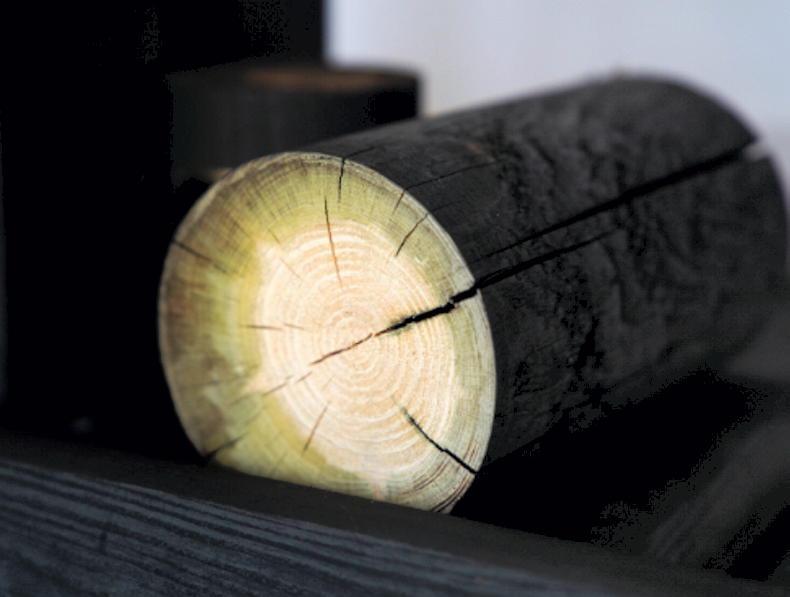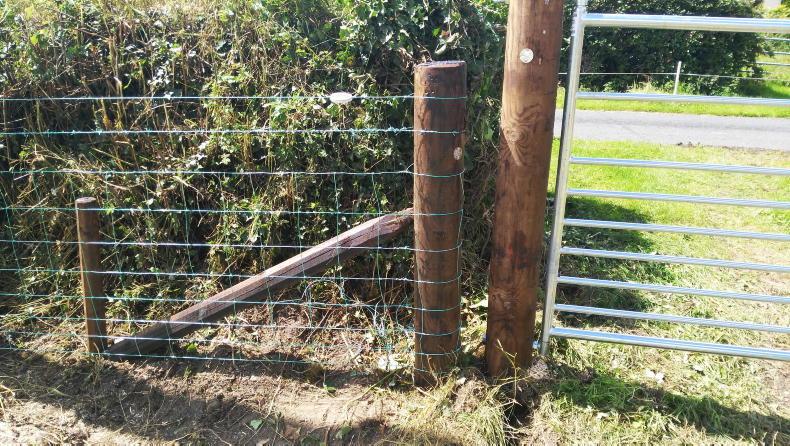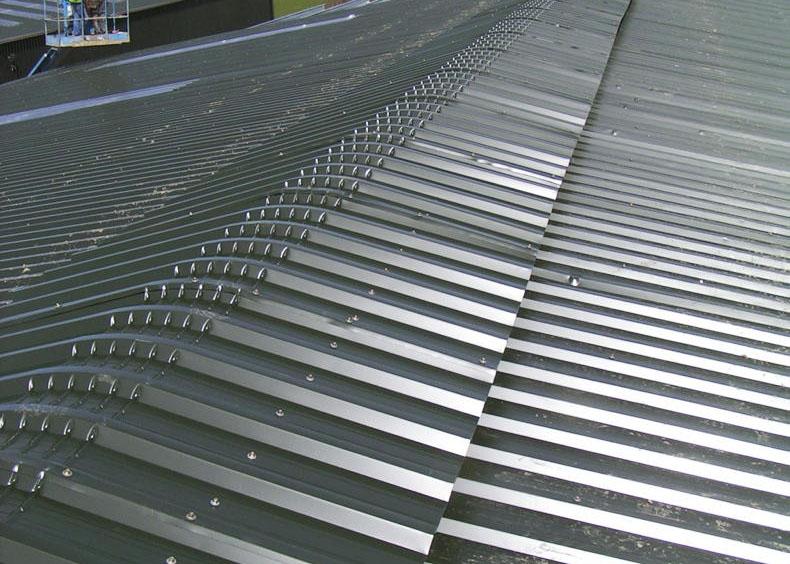Farm fencing has an important role to play in Irish grass-based farming.
Be it temporary or permanent fencing, it’s the major tool in the farmer’s belt when it comes to growing and managing grass and other forage crops.
From an insurance point of view, many companies stipulate that animals are enclosed with stock proof fencing; failure to have this may result in non-payment should a claim arise where your livestock is involved.
Creosote-treated posts had long been the go-to fence posts for their renowned longevity. With the 20-year derogation for the use of creosote as treatment for farm fencing having ended in April 2023, farmers and fencing contractors have been looking at what alternatives exist that are suited to the Irish market.
Tanalised posts
Tanalising has been a popular timber treatment for many years, with the majority of garden furniture and fencing comprising tanalised timber, with the wood dried out and tanalith preservative soaked in to the dried wood.
It has also been used for many years in farm fencing, and has garnered a name of poor longevity, mainly through improper drying and treatment. In the past, timber was placed in tanalith preservative, but the high moisture content of the timber meant that the preservative was not able to properly penetrate the timber, ultimately causing failure.
Farmers had previously experienced timber rotting in as little as three to four years when tanalised posts were used.
However, kiln drying of timber pre-treatment, as well as incision of the tanalith has improved the service life of these posts, with several manufacturers now achieving IS436 standards with a 15-year guarantee, making them eligible for TAMS and other grant spec fencing (ACRES). The incision of posts supposedly increases the uptake of preservative by more 100%.
Dura2 post
With creosote banned in France since 2019, French farmers have switched to Dura2 posts for the past four years, with the creosote alternative now gaining traction among merchants and fencing contractors in Ireland.

Dura2 posts have a 'chestnut brown colour' which the company says make them ideal for repairs to creosote fences.
Based on a tanalith preservative, the posts are then subjected to “an enhanced patented treatment process, with multiple impregnations and multiple controlled dryings”.
The posts carry an extended 20-year guarantee, five years greater than most tanalised posts.
For aesthetic reasons, the posts come in a “chestnut brown colour’’ similar to that of creosote, which the company claims makes them ideal for repairs to existing creosote fences.
Copper oil treatment
Copper oil treatment is now being lauded as the direct alternative to creosote by many importers and distributors, with the 40-year life expectancy of the product comparable to that of creosote.
Accelerated testing of copper oil treatment by Arxada in the UK has indicated that their Tanasote ® fence posts will achieve this.
Unlike creosote, the copper oil treatment is non-carcinogenic with no odour or bleeding of the product in hot weather. Four test sites in the UK were established to test the copper oil treatment against crib biting in horses, with no crib biting witnesses in four years of use.
The Irish Farmers Journal understands that the use of copper oil has been approved under IS436 but this is to be confirmed by the Department of Agriculture.
Moving away from timber posts, Clipex® has been trading in Ireland from the Ennis base for a number of years, with the full range of materials available through this depot and a limited number of products available through various co-ops throughout Ireland.
The T-piece design gives a surface area comparable to a four-inch timber stake, according to Clipex, while the galvanised coating ensures a long-life expectancy. The unique spring-loaded clip means that no tying or stapling of wire to hold it in.
Clipex fencing satisfies IS436 standards similar to the timber posts listed above, with it also having the longest guarantee of 30 years.
Cost
Cost can unfortunately be the main driver behind choosing fence posts, with cheaper posts perceived as better value. However, frequent replacement of these posts due to rotting leads to increased labour.
To analyse some of the above posts, we priced a 500m run of fencing.
A comparable number of strainers and intermediate posts were used in each, while 6ft x 4in intermediate posts were priced where timber was used.
Each run of fence comprised eight-strand high-tensile sheep wire, with a single line of high-tensile electric wire on top. T-clips and Gripples were used in each scenario. No turning posts were specified with the runs being seen as straight. The pricing is seen on Table 1.
Fencing remains covered under TAMS is still a good option. Using the best-quality materials, which should be used anyway, and getting a 40% grant back is a win-win. The reference costs for non-mountain sheep fencing is €6.75/metre, meaning all four options would still be fully covered by the grant amount, though some leave more scope for labour charges than others.
Farm fencing has an important role to play in Irish grass-based farming.
Be it temporary or permanent fencing, it’s the major tool in the farmer’s belt when it comes to growing and managing grass and other forage crops.
From an insurance point of view, many companies stipulate that animals are enclosed with stock proof fencing; failure to have this may result in non-payment should a claim arise where your livestock is involved.
Creosote-treated posts had long been the go-to fence posts for their renowned longevity. With the 20-year derogation for the use of creosote as treatment for farm fencing having ended in April 2023, farmers and fencing contractors have been looking at what alternatives exist that are suited to the Irish market.
Tanalised posts
Tanalising has been a popular timber treatment for many years, with the majority of garden furniture and fencing comprising tanalised timber, with the wood dried out and tanalith preservative soaked in to the dried wood.
It has also been used for many years in farm fencing, and has garnered a name of poor longevity, mainly through improper drying and treatment. In the past, timber was placed in tanalith preservative, but the high moisture content of the timber meant that the preservative was not able to properly penetrate the timber, ultimately causing failure.
Farmers had previously experienced timber rotting in as little as three to four years when tanalised posts were used.
However, kiln drying of timber pre-treatment, as well as incision of the tanalith has improved the service life of these posts, with several manufacturers now achieving IS436 standards with a 15-year guarantee, making them eligible for TAMS and other grant spec fencing (ACRES). The incision of posts supposedly increases the uptake of preservative by more 100%.
Dura2 post
With creosote banned in France since 2019, French farmers have switched to Dura2 posts for the past four years, with the creosote alternative now gaining traction among merchants and fencing contractors in Ireland.

Dura2 posts have a 'chestnut brown colour' which the company says make them ideal for repairs to creosote fences.
Based on a tanalith preservative, the posts are then subjected to “an enhanced patented treatment process, with multiple impregnations and multiple controlled dryings”.
The posts carry an extended 20-year guarantee, five years greater than most tanalised posts.
For aesthetic reasons, the posts come in a “chestnut brown colour’’ similar to that of creosote, which the company claims makes them ideal for repairs to existing creosote fences.
Copper oil treatment
Copper oil treatment is now being lauded as the direct alternative to creosote by many importers and distributors, with the 40-year life expectancy of the product comparable to that of creosote.
Accelerated testing of copper oil treatment by Arxada in the UK has indicated that their Tanasote ® fence posts will achieve this.
Unlike creosote, the copper oil treatment is non-carcinogenic with no odour or bleeding of the product in hot weather. Four test sites in the UK were established to test the copper oil treatment against crib biting in horses, with no crib biting witnesses in four years of use.
The Irish Farmers Journal understands that the use of copper oil has been approved under IS436 but this is to be confirmed by the Department of Agriculture.
Moving away from timber posts, Clipex® has been trading in Ireland from the Ennis base for a number of years, with the full range of materials available through this depot and a limited number of products available through various co-ops throughout Ireland.
The T-piece design gives a surface area comparable to a four-inch timber stake, according to Clipex, while the galvanised coating ensures a long-life expectancy. The unique spring-loaded clip means that no tying or stapling of wire to hold it in.
Clipex fencing satisfies IS436 standards similar to the timber posts listed above, with it also having the longest guarantee of 30 years.
Cost
Cost can unfortunately be the main driver behind choosing fence posts, with cheaper posts perceived as better value. However, frequent replacement of these posts due to rotting leads to increased labour.
To analyse some of the above posts, we priced a 500m run of fencing.
A comparable number of strainers and intermediate posts were used in each, while 6ft x 4in intermediate posts were priced where timber was used.
Each run of fence comprised eight-strand high-tensile sheep wire, with a single line of high-tensile electric wire on top. T-clips and Gripples were used in each scenario. No turning posts were specified with the runs being seen as straight. The pricing is seen on Table 1.
Fencing remains covered under TAMS is still a good option. Using the best-quality materials, which should be used anyway, and getting a 40% grant back is a win-win. The reference costs for non-mountain sheep fencing is €6.75/metre, meaning all four options would still be fully covered by the grant amount, though some leave more scope for labour charges than others.










SHARING OPTIONS